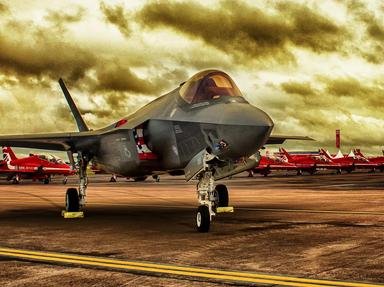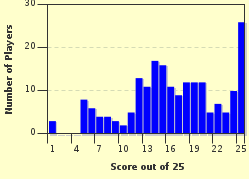Quiz Answer Key and Fun Facts
1. (A)1936-1968: Which long-serving aircraft was known as 'Faithful Annie'?
2. (B)1912-1918: Which general purpose biplane was the major type in service with the Royal Flying Corps at the beginning of WWI?
3. (C)1917-1919: Which formidably manoeuverable biplane scout shot down more enemy aircraft than any other Allied fighter during WW1?
4. (D)1939-1945: Which WW2 two seat RAF fighter had all its armament in a power-operated dorsal turret?
5. (E)1916-1919: Which unmanoeuverable fighter was turned into a competent single seat bomber during WW1?
6. (F)1923-1934: Which biplane was the only fighter in service with the Royal Navy throughout most of the 1920s?
7. (G)1937-1945: What was the last biplane fighter to enter service with the RAF?
8. (H)1969-present: What was the first fighter in the world to enter service with vertical and short take off and landing capability?
9. (I)1930-1936: Which flying boat was the largest aircraft in service with the RAF in the first half of the 1930s?
10. (J)1956-1968: Which all-weather interceptor was the first twin-jet delta-winged aircraft in the world?
11. (K) 1918-1919: Which twin-engined coastal patrol bomber entered WW1 very late, was built in very small numbers, and continued as a commercial airliner into the 1920s?
12. (L)1941-1954: Which four-engined heavy bomber was used in the famous 'Dambusters Raid' of May 1943?
13. (M)1944-1957: Which RAF fighter was the only jet aircraft to enter operational service with the Allies during WW2?
14. (N)1974-present: Which maritime patrol and AEW aircraft was based on the De Havilland Comet jet airliner?
15. (O)1936-1940: What was the RAF's first bomber to be armed with a power-operated gun turret?
16. (P)1916-1918: Which biplane scout was instrumental in helping the RFC to meet the latest German fighters on equal terms for the first time?
17. (Q)1935-1947: The Queen Bee was a pilotless, radio-controlled drone aircraft used for gunnery practice during WW2.
18. (R) 1916-1919: Which WWI reconnaissance biplane was known as the "Harry Tate"?
19. (S)1937-1954: Which fighter aircraft was endowed with iconic status following its role in the Battle of Britain?
20. (T)1912-1915: Which aircraft was used in the first successful aerial bombing raid by British forces, in October 1914?
21. (U)1926-1934: The Understrand was an earlier version of the Overstrand bomber.
22. (V)1956-1984: Which one of the three V-Force strategic bombers had a distinctive delta wing and was the only one to use its weapons in anger?
23. (W)1928-1942: Which general purpose biplane was widely used in policing the British Empire and its mandated territories throughout the 1930s?
24. (Y)1943-1957: Which military transport was based on the Lancaster bomber?
25. (Z)1968-1974: The Zephyr replaced the Auster as a communications aircraft after WWII.
Source: Author
Plumbus
This quiz was reviewed by FunTrivia editor
trident before going online.
Any errors found in FunTrivia content are routinely corrected through our feedback system.

